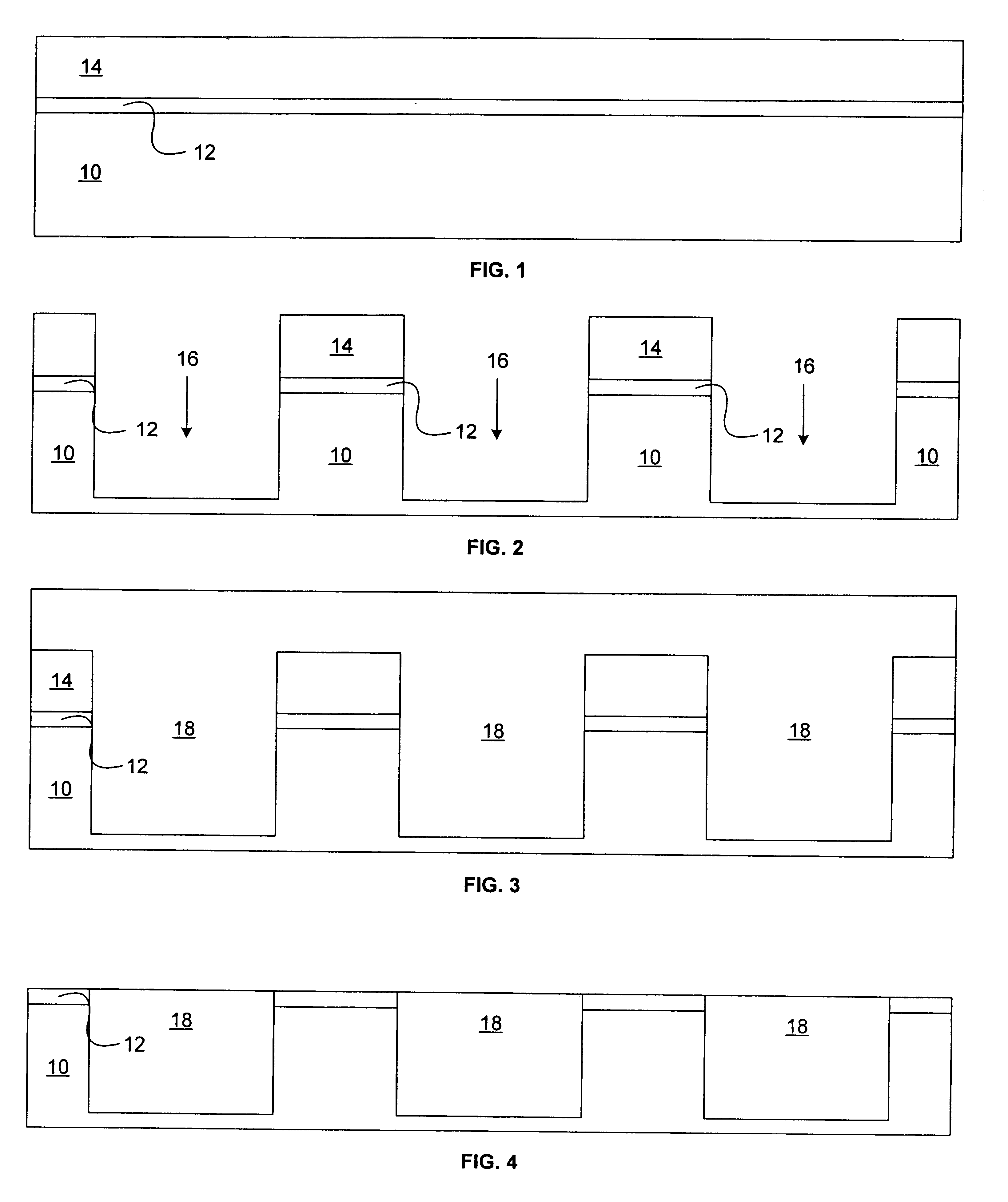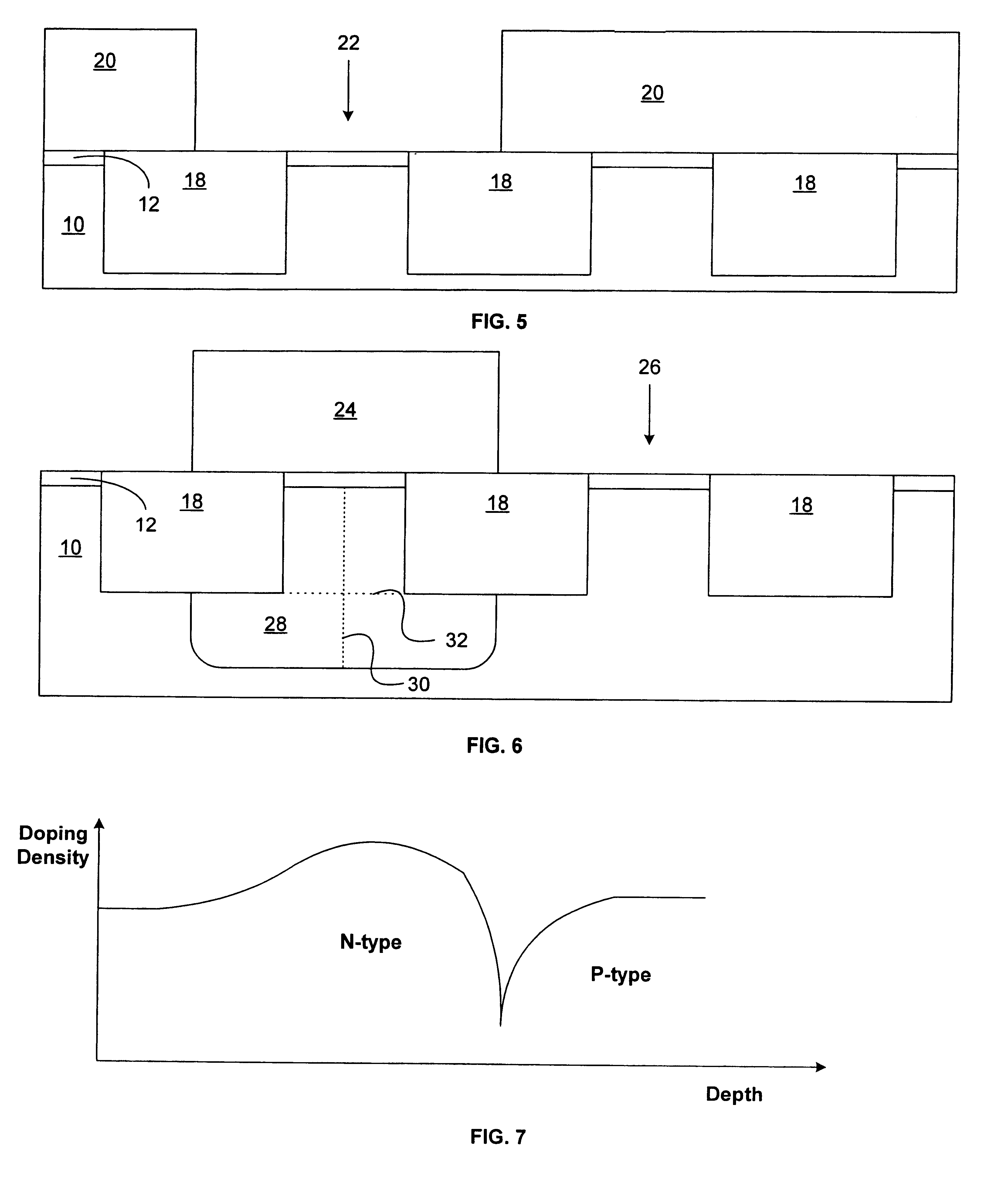Radiation hardening method for shallow trench isolation in CMOS
a technology of cmos and radiation hardening, which is applied in the direction of basic electric elements, electrical equipment, semiconductor devices, etc., can solve the problems of increasing increasing the difficulty of recombination, and increasing the accumulation of net positive charges in silicon dioxide, so as to reduce the diffusivity of small atoms and eliminate additional leakage paths
- Summary
- Abstract
- Description
- Claims
- Application Information
AI Technical Summary
Benefits of technology
Problems solved by technology
Method used
Image
Examples
first embodiment
[0029]Referring generally now to FIG. 11, in a first embodiment, the starting material is an epitaxial silicon wafer. Optionally, the starting material can be germanium-silicon (Ge—Si) epitaxy on silicon, wherein the maximum germanium concentration ideally occurs at the depth equivalent to the bottom of the STI trench. The wafer is processed on a standard commercial CMOS STI process up to and including definition of the shallow trenches.
[0030]At a point in the process after shallow trench formation, but before field oxidation, a photoresist mask is patterned on the wafer such that the edges of P-well active areas are exposed, as well as most of the field oxide over P-well. The wafer is then implanted with a fairly large dose (1013 to 1017 ions / cm2) of a large atom group III element or compound, such as B, BF2, Al, Ga or In at an energy between 30 and 1000 keV. The implant may be followed by an implant of a large group V element, such as P, As, or Sb using similar doses and energies ...
second embodiment
[0033]In a second embodiment, the starting material can be bulk silicon, and the Ge—Si epitaxial starting material need not be used.
third embodiment
[0034]In a third embodiment, shown in FIG. 12, the starting material is an insulating substrate 56 containing a thin silicon layer 54 on top, such as silicon-on-insulator (“SOI”) or silicon-on-sapphire (“SOS”). The silicon layer is shown having oxide isolation areas 52. Insulating region 56 may or may not abut isolation area 52.
PUM
| Property | Measurement | Unit |
|---|---|---|
| energy | aaaaa | aaaaa |
| energy | aaaaa | aaaaa |
| angle | aaaaa | aaaaa |
Abstract
Description
Claims
Application Information
 Login to View More
Login to View More - R&D
- Intellectual Property
- Life Sciences
- Materials
- Tech Scout
- Unparalleled Data Quality
- Higher Quality Content
- 60% Fewer Hallucinations
Browse by: Latest US Patents, China's latest patents, Technical Efficacy Thesaurus, Application Domain, Technology Topic, Popular Technical Reports.
© 2025 PatSnap. All rights reserved.Legal|Privacy policy|Modern Slavery Act Transparency Statement|Sitemap|About US| Contact US: help@patsnap.com



